In this tutorial, you will learn how to select, adjust, and apply colors to objects with new color variations in Paint.NET. Whether you are a beginner or looking to refresh your knowledge, this guide provides you with practical tips to effectively manage the color palette of Paint.NET. Let's dive right in!
Key Insights
- Paint.NET offers a powerful color palette for inputting primary and secondary colors.
- You can easily change colors by clicking and make precise color adjustments.
- Using the transparency function allows you to create more complex and interesting designs.
- Color corrections help quickly achieve the desired visual effect.
- Utilizing hex codes enables you to use colors consistently across different projects.
Step-by-Step Guide to Color Selection and Adjustment in Paint.NET
First, take a look at the color palette located in the top area of Paint.NET. Here, the primary color (top) and secondary color (bottom) are arranged. Their current positions are important for changing them later. You can quickly swap colors by clicking on the two arrows or pressing the "X" key.
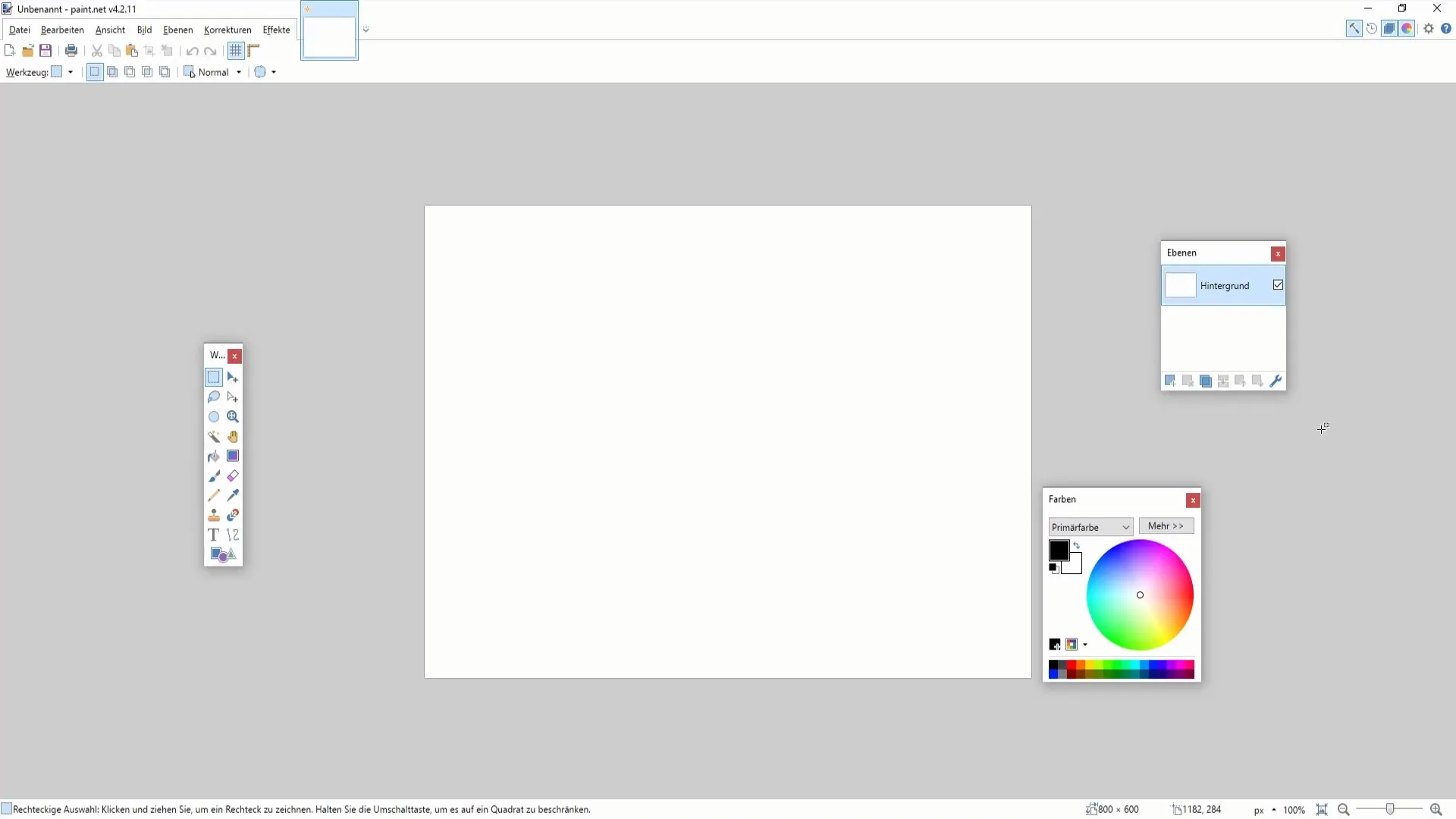
Now that you understand where the color palette is, let's change the primary color. Click on the primary color field and choose any color from the color box, such as Red or Orange. The primary color will update instantly.
To change the secondary color, click on the secondary color field and choose a color, such as Green. Here too, the secondary color will be adjusted immediately.
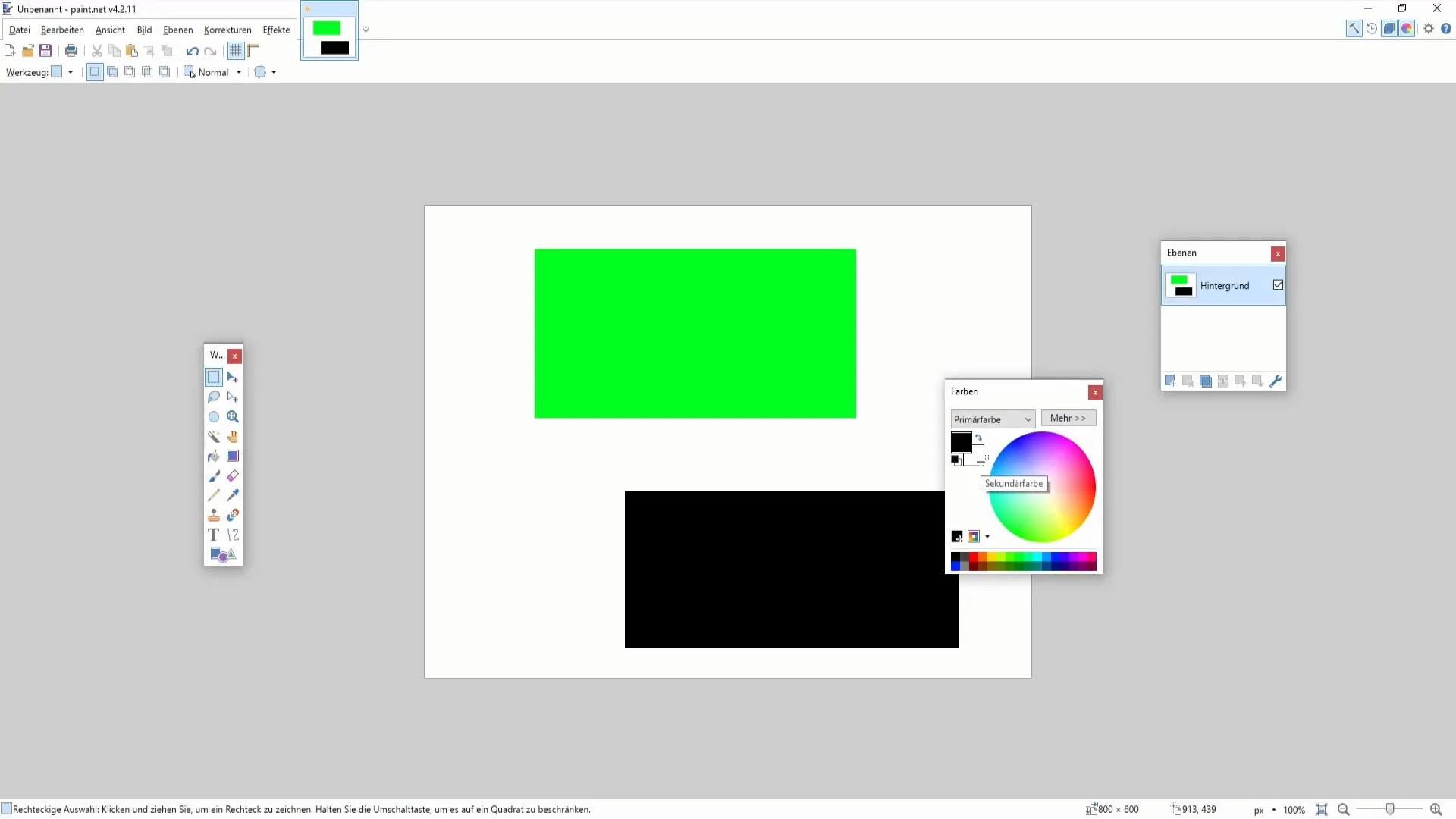
You can also experiment with the color sliders to achieve a specific shade. For example, adjust to a less vibrant Yellow by moving the color slider slightly to the left in the color box. The sliders allow you to neutralize unwanted color tones.
Another important tool in Paint.NET is the "More" function. Here, you can adjust colors even more precisely by regulating Red, Green, and Blue separately. Experiment to create semi-tone effects. For instance, adding a 20% red component changes the entire color shade.
A particularly useful feature is the transparency setting. Here, you can adjust the transparency of a color. Set it to 50% to achieve a semi-transparent effect for the object. This will make your designs much livelier and more appealing.
To practically test the application, use the selection tool to choose a part of the drawing. Then, when you paint on the selected object with the brush, you should see the color change immediately. By adjusting the transparency, you can also decide how much the underlying color comes through.
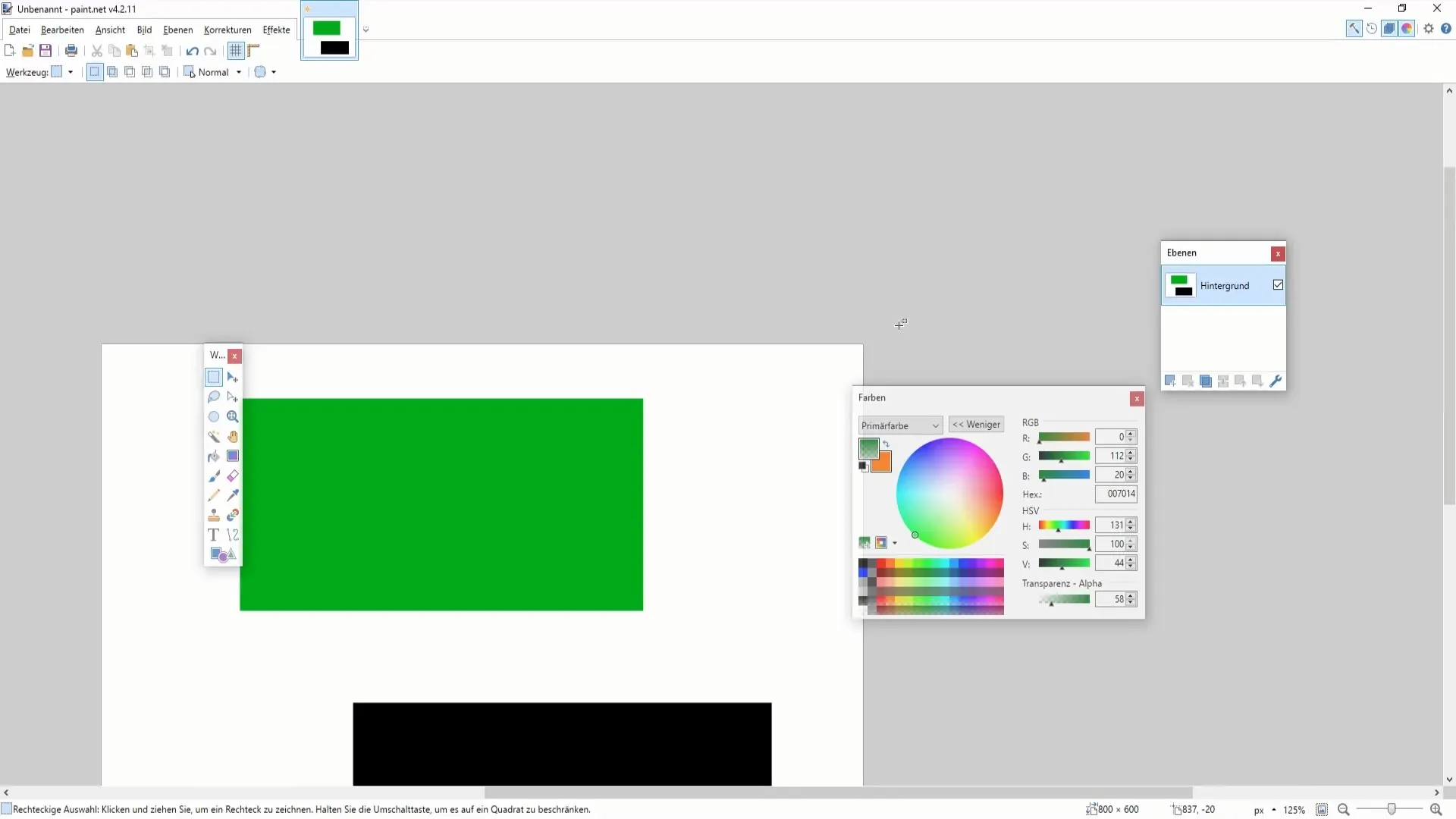
If you dislike a color, don't be afraid to adjust or reset it. In Paint.NET, it is easy to layer colors and create interesting effects through their combination. Additionally, you can experiment with hue, saturation, and brightness to customize the final result to your liking.
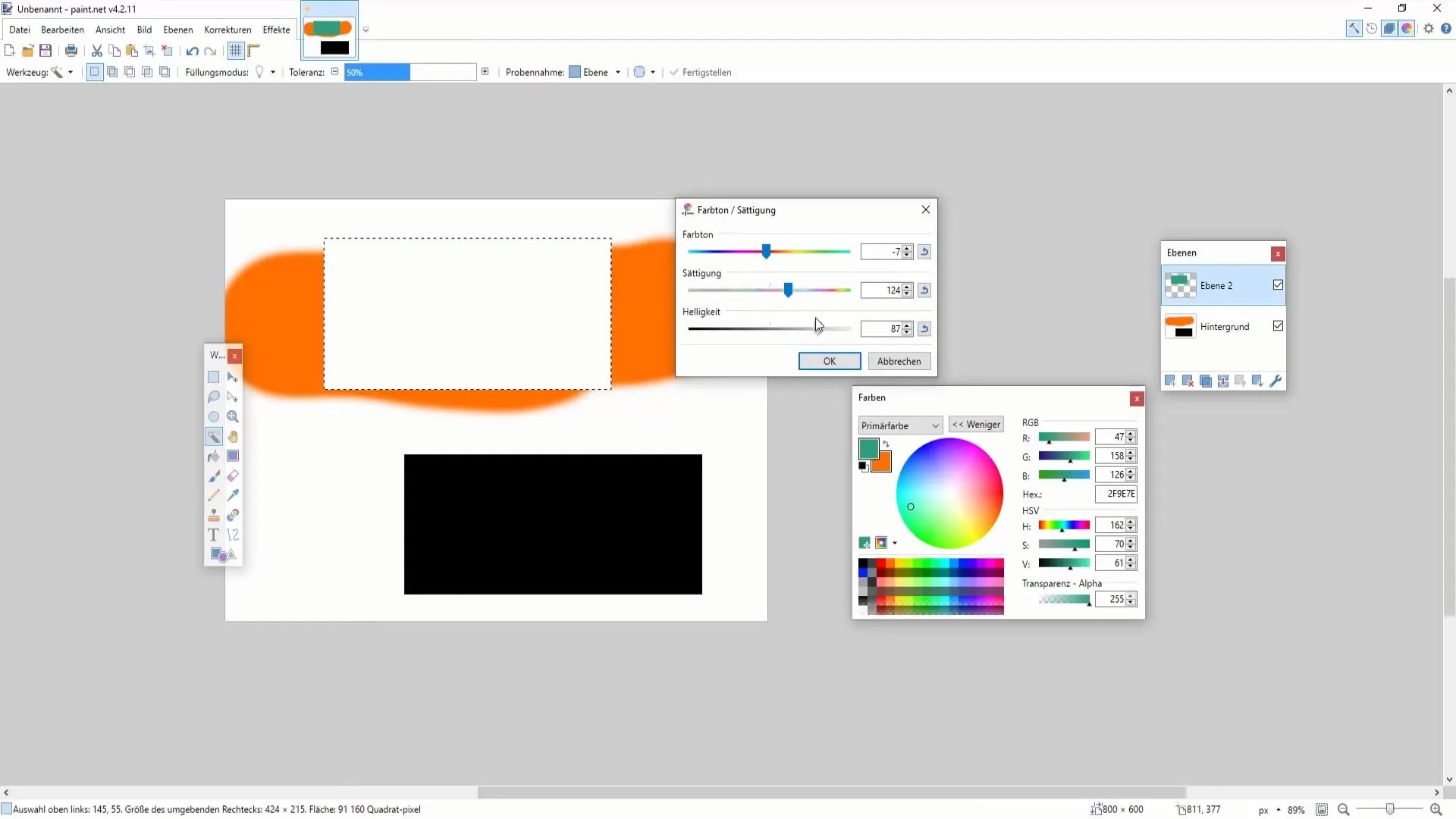
An especially handy feature is that the last used color code is displayed in a small field. This makes it easier for you to reuse colors in different projects. You can copy this color code and paste it into another document to reuse the same color there - an easy way to ensure consistency in your design.
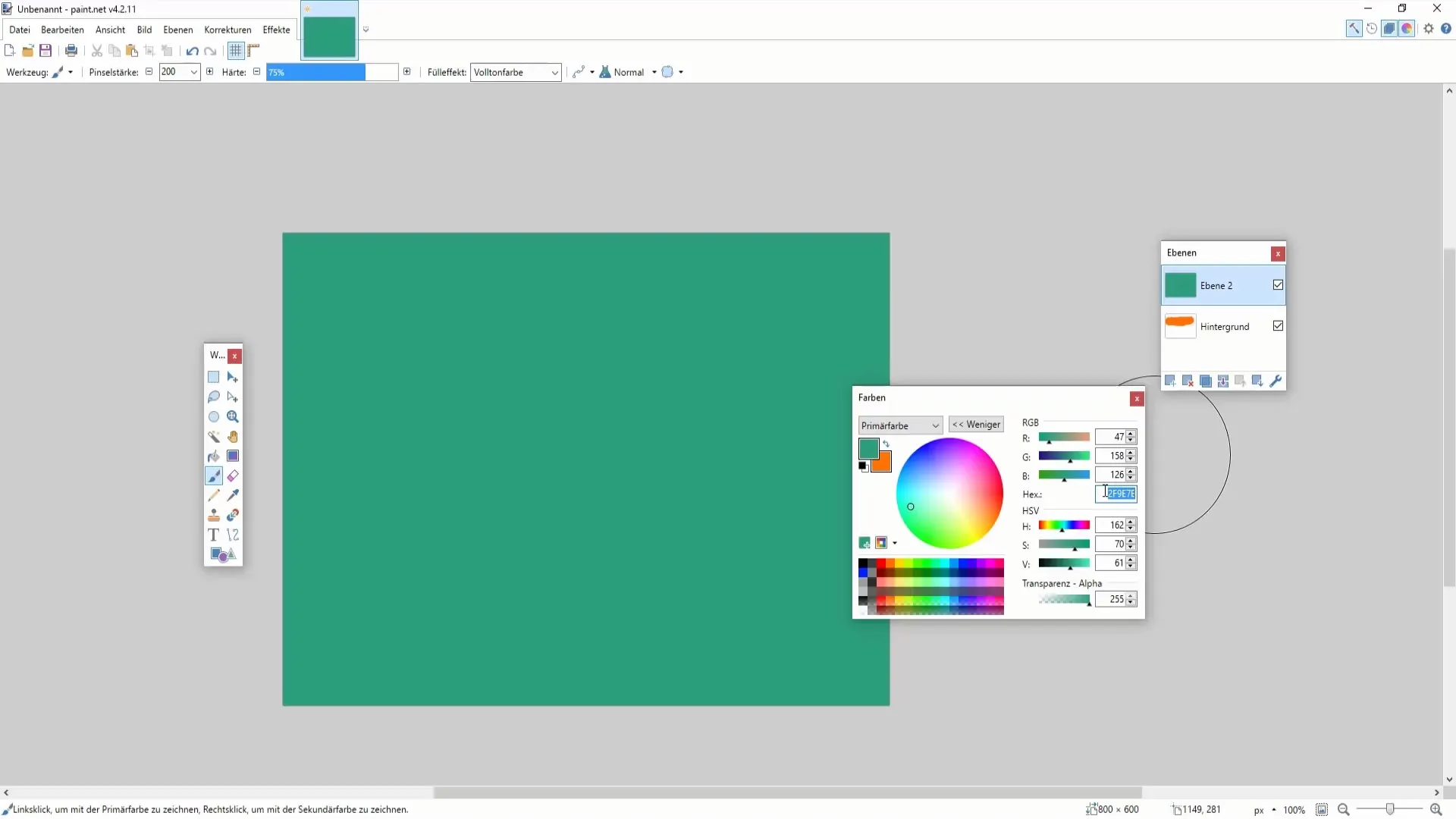
If you have any questions while working on the application or modifying colors in Paint.NET, do not hesitate to ask. There are many tips and tricks to expand your color knowledge and make the most of the software.
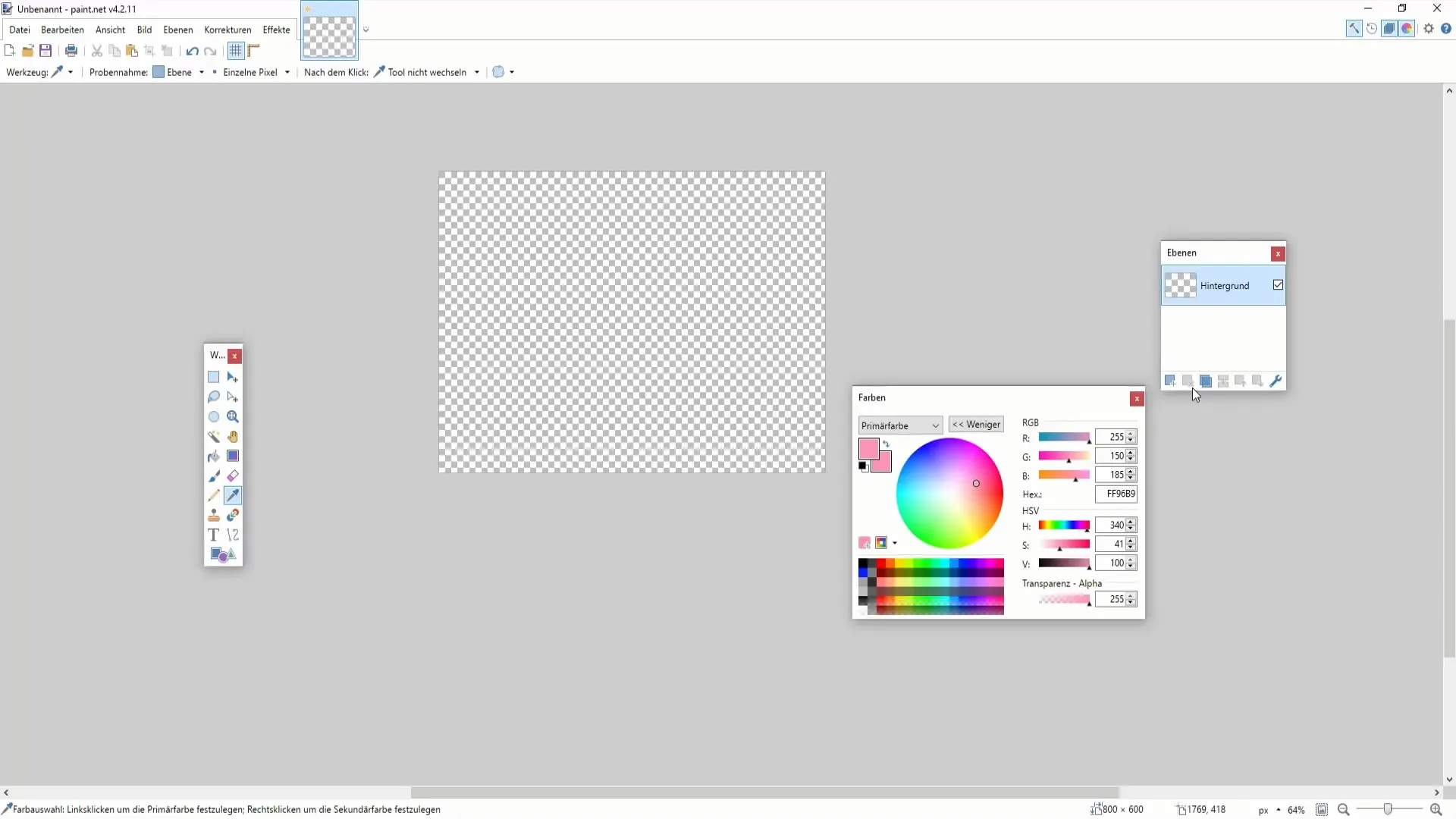
Summary
In this tutorial, you have learned the importance of selecting and adjusting colors in Paint.NET. You now know how to utilize the color palette to effectively change both primary and secondary colors, significantly enhancing the visual quality of your projects. Stay creative and continue experimenting with different color shades!
Frequently Asked Questions
How do I change the primary and secondary colors in Paint.NET?Simply click on the desired fields in the color palette to select the colors.
How can I adjust the transparency of a color?You can adjust the transparency in the corresponding area of the user interface.
What should I do if I don't like a color?Use the sliders to adjust the color or select a new color from the color palette.
Can I save colors for other projects?Yes, you can copy the hex code of the color and reuse it in other projects.
Does this technique also work in other image editing programs?Some techniques may be similar, however, Paint.NET offers some specific features that many other programs do not have.


